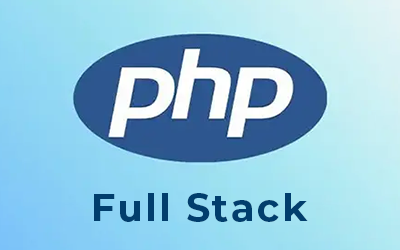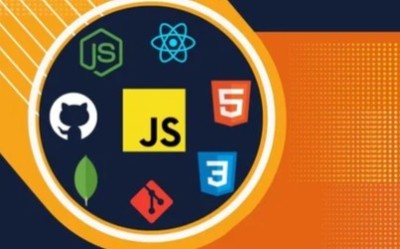Course description
Highlights:
- Introduction to Software Testing: Understand the fundamentals of software testing, its importance, and different types of testing. - Manual Testing Techniques: Learn how to perform manual testing using test cases, bug reports, andexploratory testing methods. - Automation Testing Tools: Get hands-on experience with automation tools like Selenium, JUnit, andTestNG for faster and more efficient testing.
- Test Management: Learn how to manage test plans, test cases, and bug tracking using popular toolslike Jira and TestRail. - Performance and Security Testing: Gain knowledge on testing software performance and identifyingsecurity vulnerabilities. - Best Practices and Testing Strategies: Learn industry best practices and strategies to ensure thequality and reliability of software applications.
Course Objective:
By the end of this course, you will be able to: - Understand the importance of software testing in the development lifecycle. - Conduct both manual and automated testing for software applications. - Design and execute test cases, log defects, and report on testing results. - Use popular testing tools to automate tests and track progress. - Implement performance and security testing to ensure a high-quality product. - Apply best practices and methodologies for effective software testing.
Course Structure:
1. Introduction to Software Testing
- What is software testing and why is it important?
- Overview of the software development lifecycle (SDLC) and testing lifecycle (STLC). - Key terminology in software testing: Bug, defect, error, test case, test plan. - Types of testing: Manual vs. automated, functional vs. non-functional. - The role of a software tester in an agile development environment.
2. Manual Testing Techniques
- Introduction to manual testing and when it is used. - Writing test cases: Structure, format, and best practices. - Types of manual testing: Functional, integration, system, regression, and acceptance testing. - Bug reporting and defect tracking: Tools like Jira, Bugzilla, and Mantis. - Exploratory testing and its role in uncovering defects.
3. Test Planning and Test Case Design
- Designing effective test cases and test plans. - Understanding test scenarios, test data, and expected results. - Writing positive and negative test cases. - Creating traceability matrices to map test cases to requirements. - Prioritizing tests and managing testing schedules.
4. Automation Testing Tools
- Introduction to automation testing and its benefits. - Overview of popular automation tools: Selenium, JUnit, TestNG, and Appium. - Writing and executing automated test scripts in Selenium. - Understanding the Page Object Model (POM) design pattern for maintainable code. - Integration with Continuous Integration/Continuous Deployment (CI/CD) tools like Jenkins.
5. Performance Testing
- Understanding the importance of performance testing in software quality. - Types of performance testing: Load testing, stress testing, and scalability testing. - Using tools like Apache JMeter and LoadRunner for performance testing. - Analyzing performance test results and identifying bottlenecks.
- Best practices for optimizing software performance.
6. Security Testing
- Introduction to security testing and its importance. - Common security vulnerabilities and their impact (e.g., SQL Injection, XSS, CSRF). - Security testing tools and frameworks like OWASP ZAP and Burp Suite. - Performing penetration testing and vulnerability assessment. - Implementing security best practices during the software development lifecycle.
7. Test Management and Reporting
- Managing test plans, schedules, and resources effectively. - Tracking and reporting test progress and results. - Using test management tools like TestRail and Quality Center. - Analyzing and interpreting test metrics and reporting to stakeholders. - Defect life cycle management: From discovery to resolution.
8. Best Practices and Advanced Testing Strategies
- Agile testing methodologies: Scrum, Kanban, and Test-Driven Development (TDD). - Creating reusable and maintainable test scripts in automation. - Continuous testing and its integration with DevOps practices. - Strategies for cross-browser testing and mobile application testing. - Advanced testing concepts: Mocking, stubbing, and test environments.
Learning Methodology:
- Interactive Lessons: Learn through hands-on exercises, real-world examples, and demonstrations of
testing tools and techniques. - Practical Projects: Apply your skills to real projects, including creating test plans, writing test cases, and automating test scripts. - Assessments and Quizzes: Regular quizzes and practical exercises to test your knowledge andhelpreinforce key concepts. - Live Sessions: Participate in live Q&A sessions and coding exercises with instructors for clarificationand deeper understanding. - Discussion Forums: Engage with fellow learners and instructors, ask questions, share projects, andcollaborate on problem-solving.
Who Should Enroll:
- Beginners who are interested in starting a career in software testing. - Aspiring quality assurance (QA) engineers and software testers. - Developers looking to expand their skill set to include testing and quality assurance. - Professionals transitioning into automation testing roles or seeking to learn new testing tools. - Anyone interested in understanding the processes, methodologies, and best practices for testingsoftware applications. This Software Testing course will provide you with the necessary skills to ensure that applications arefunctional, reliable, and perform well. Whether you are pursuing a career in quality assurance, manual testing, or automation, this course will prepare you to effectively evaluate software andensure its quality across different stages of development.














